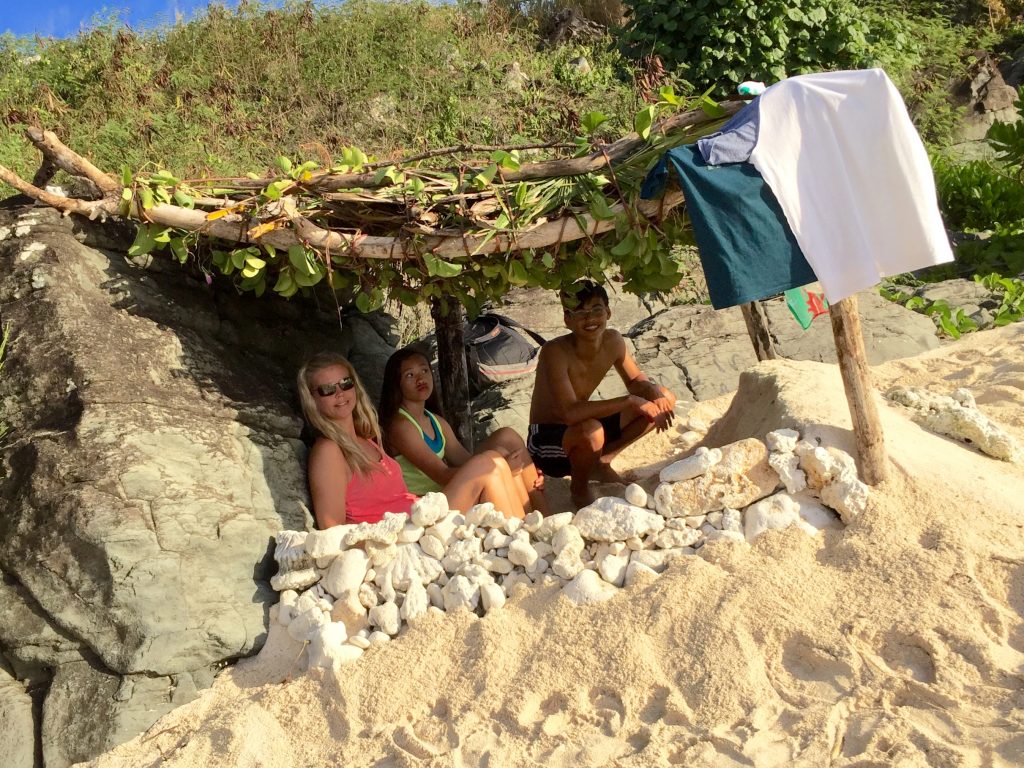
By Christina Garcia
What lies beyond the sunset?
Rarotonga has beaches everywhere, but Black Rock was the one my kids couldn’t quit. For reasons they couldn’t explain — and I couldn’t either — they begged to go back day after day. Maybe it was the hulking black lava boulders that look like they’d been dropped by the gods, maybe it was the turquoise pools that stayed calm even when everything else churned.
Or maybe it was the way the place stripped us down to the basics. No slides, no Wi-Fi, no neon distractions. Just driftwood, palm fronds, sand, and imagination. That simplicity, the kind we’ve forgotten in the blur of modern life, sparked something in us. The kids became engineers and storytellers, building makeshift huts. I found myself noticing things I’d normally scroll past — the texture of the rocks, the rhythm of the tide, the smell of wet earth after a sudden storm.
One afternoon, a squall came in fast. Ugly clouds, sideways rain. And wouldn’t you know it — one of their crooked little shelters actually held. It kept us dry, saved our cameras and phones, and gave us this unexpected sense of triumph. For a few hours we weren’t just a family on holiday; we were survivors, connected to the land and each other in a way that felt primal.
We spent hours there, mostly alone. Just us and a lagoon that felt borrowed from another world. And then came the sunsets. Not your run-of-the-mill Instagram sunsets. These were the kind that stop you mid-sentence, the kind that make you forget the urge to take a photo because you know the shot will never measure up. One evening the whole horizon cracked open in fire and gold, and I knew this beach deserved a gallery of its own.
For the Rarotongan Islanders, Black Rock is sacred. They believe it’s where spirits leave this world for the next. Standing there at dusk, with the horizon aflame, it made sense. It looked like the gates of heaven, or at least something close.







